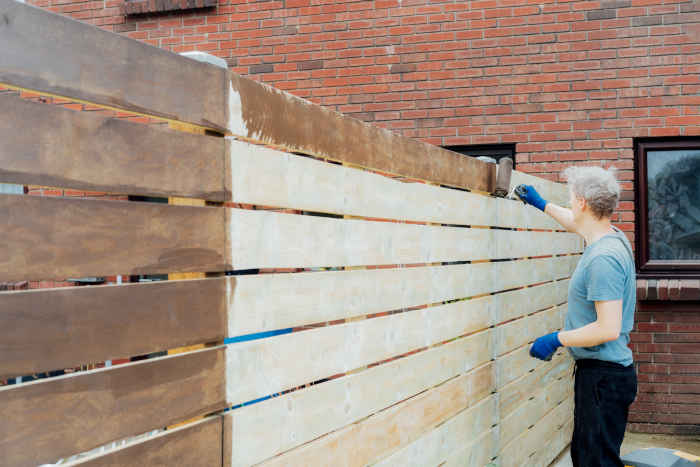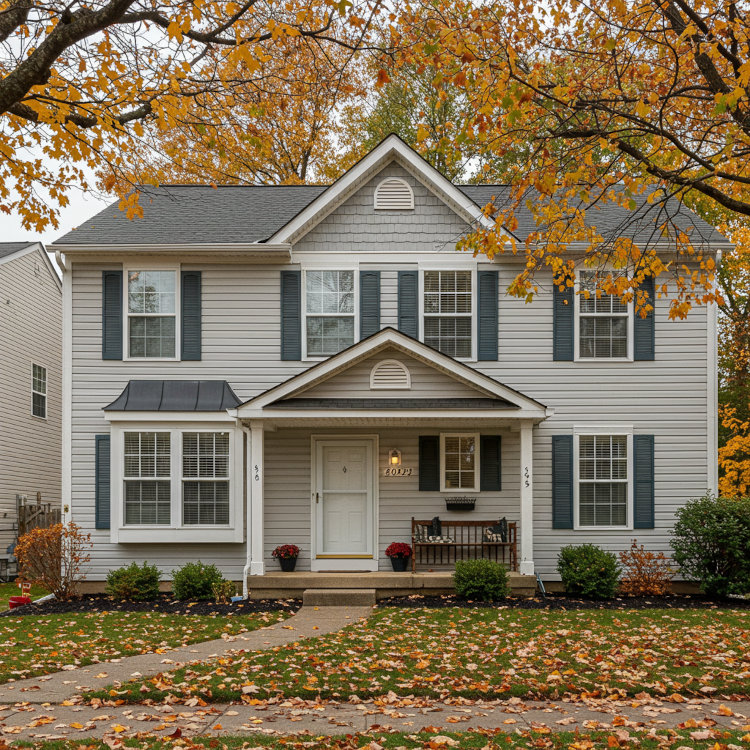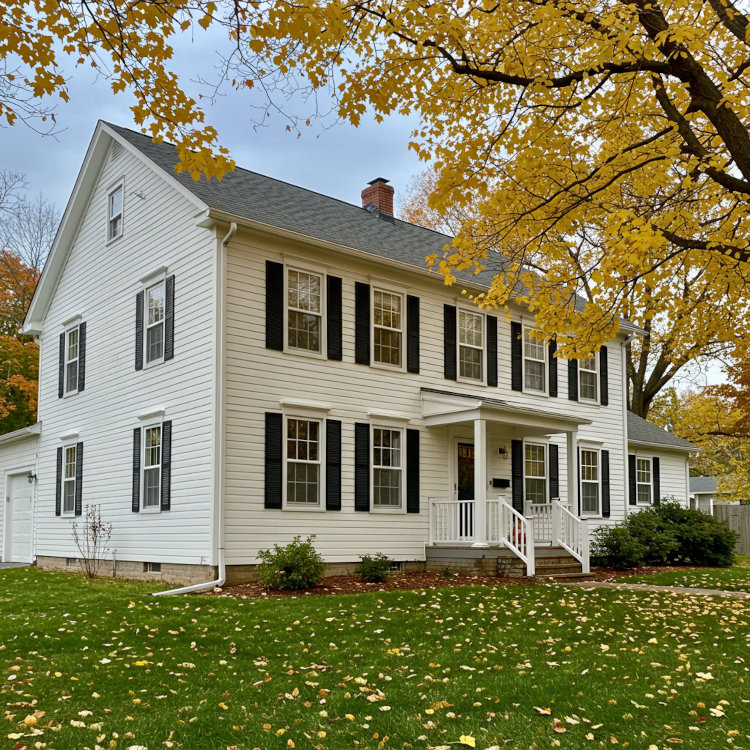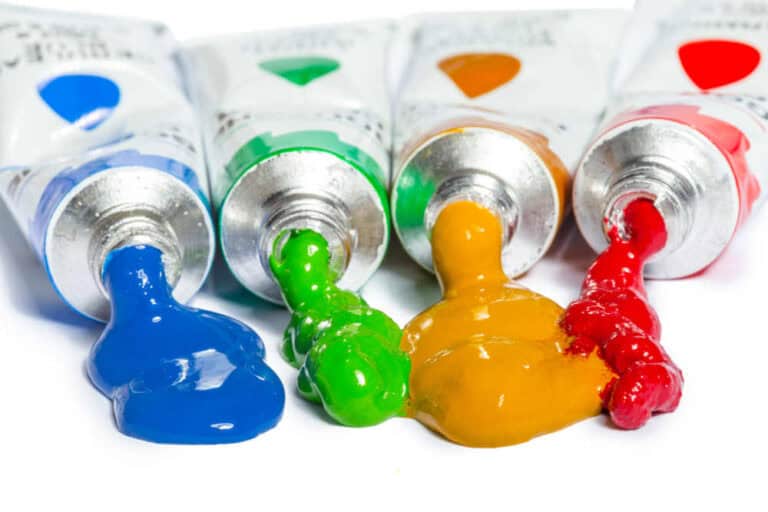As an Amazon Associate, I earn from qualifying purchases. Privacy Policy / Terms
Refreshing your fence can transform the look of your outdoor space, but what if it’s already painted? Can solid stain be used on painted surfaces? Absolutely—with the right preparation and techniques. This article breaks down the steps and considerations for applying solid stain to previously painted wood.
Understanding Solid Stain
Solid stain is a versatile product used to protect and enhance wood surfaces, making it ideal for achieving a smooth and durable wood finish. It creates a rich, opaque finish that mimics paint but retains some of the wood’s natural beauty. Ideal for outdoor use, it’s known for its durability and ability to withstand harsh weather conditions.
Key characteristics of solid stain:
- Breathability: Allows moisture to escape, preventing damage to the wood.
- Application: Penetrates slightly into the wood’s surface for a more integrated finish.
- Color Variety: Available in a wide range of colors to suit any aesthetic.
When used correctly, solid stain provides a reliable and visually appealing solution for wood tones and painted surfaces alike.
Can Solid Stain Be Applied Over Painted Wood?
Yes, but success depends on several factors. Here are the critical aspects to consider:
- Condition of the Painted Surface:
- Solid stain adheres poorly to surfaces with loose paint or chipping. For the best results, the painted surface must be stable and intact.
- Type of Stain:
- Both water-based and oil-based stains are options. Choose based on your preferences for durability and drying time.
- Surface Preparation:
- Preparing the surface is crucial for proper adhesion. Steps like cleaning, sanding, and priming will ensure a lasting finish.
By addressing these considerations, you can successfully apply solid stain to previously painted wood.
Step-by-Step Guide to Preparing Painted Wood for Stain
Transforming painted wood with solid stain requires careful preparation. Follow these steps to achieve a professional-quality result:
Step 1: Clean the Surface
Remove dirt, mildew, and surface contaminants using a mixture of soap and water or a pressure washer. For stubborn areas, consider using a wire brush. Allow the surface to dry thoroughly, typically 24 hours, before proceeding.
Step 2: Sand the Surface
To ensure proper adhesion, sand the painted surface lightly, removing excess stain or debris, and then clean with a tack cloth to eliminate fine particles. This process roughens the surface, exposing wood grain where possible and removing any loose paint. Always wear a dust mask to protect yourself from inhaling particles.
Step 3: Inspect and Repair
Check for cracks, peeling, or other imperfections. Address these issues with wood filler or by replacing damaged sections.
Step 4: Prime the Surface
Apply a high-quality primer compatible with both the existing paint and your chosen stain to create a solid base wood layer for better stain application. This step improves adhesion and helps the solid stain achieve an even finish.
Step 5: Apply the Stain
Use a brush, roller, or sprayer to apply the stain in thin, even coats, ensuring you work in a well-ventilated area to minimize exposure to fumes. Opt for stain colors that complement your outdoor space while enhancing the natural beauty of stained wood or painted surfaces. Allow ample dry time between coats for the best results.
Benefits and Drawbacks of Staining Over Paint
Benefits
- Enhanced Appearance: Solid stain offers a wide range of color options to refresh and revitalize old paint.
- Improved Durability: Protects against weathering, UV damage, and wear.
- Eco-Friendly Options: Water-based stains provide a low-VOC alternative.
Drawbacks
- Intensive Prep Work: Proper surface preparation can be time-consuming.
- Adhesion Challenges: Poorly prepared surfaces may result in peeling or flaking.
- Limited Penetration: Solid stain doesn’t fully integrate into painted wood as it does with bare wood.
FAQs About Solid Stain on Painted Wood
Can You Use Solid Stain on Painted Cabinets?
While possible, kitchen cabinets require extensive sanding to remove glossy paint, ensuring a smooth base wood for gel stain application. Opt for gel stains for easier application on such surfaces.
Is Solid Stain Suitable for Painted Decks?
Yes, solid stain works well on painted decks if the paint is intact and the surface is properly prepared. Choose water-based stains for easy cleanup with soap and water, or oil-based stains for a longer-lasting wood finish, depending on your preferences.
Which Stains Work Best on Painted Wood?
High-quality stains from brands like Cabot offer excellent options for painted wood surfaces. Ensure compatibility with your specific project needs.
Final Thoughts
Applying solid stain to painted surfaces can give them a fresh, vibrant look while providing long-lasting protection. The key to success lies in proper surface preparation and selecting the right products. If you’re unsure, professional painters can ensure the job is done correctly and efficiently. With patience and attention to detail, including proper drying time and applying a protective top coat, your project will look stunning for years to come.
Views Expressed DisclaimerThe views, opinions, and information presented in this article are for informational purposes only and do not necessarily reflect the official policies or positions of Crocker Home Painting Company. While every effort has been made to ensure accuracy, Crocker Home Painting Company is not liable for any errors, omissions, or decisions made based on the content provided. Readers are encouraged to consult professionals for specific advice or assistance related to their unique circumstances.







